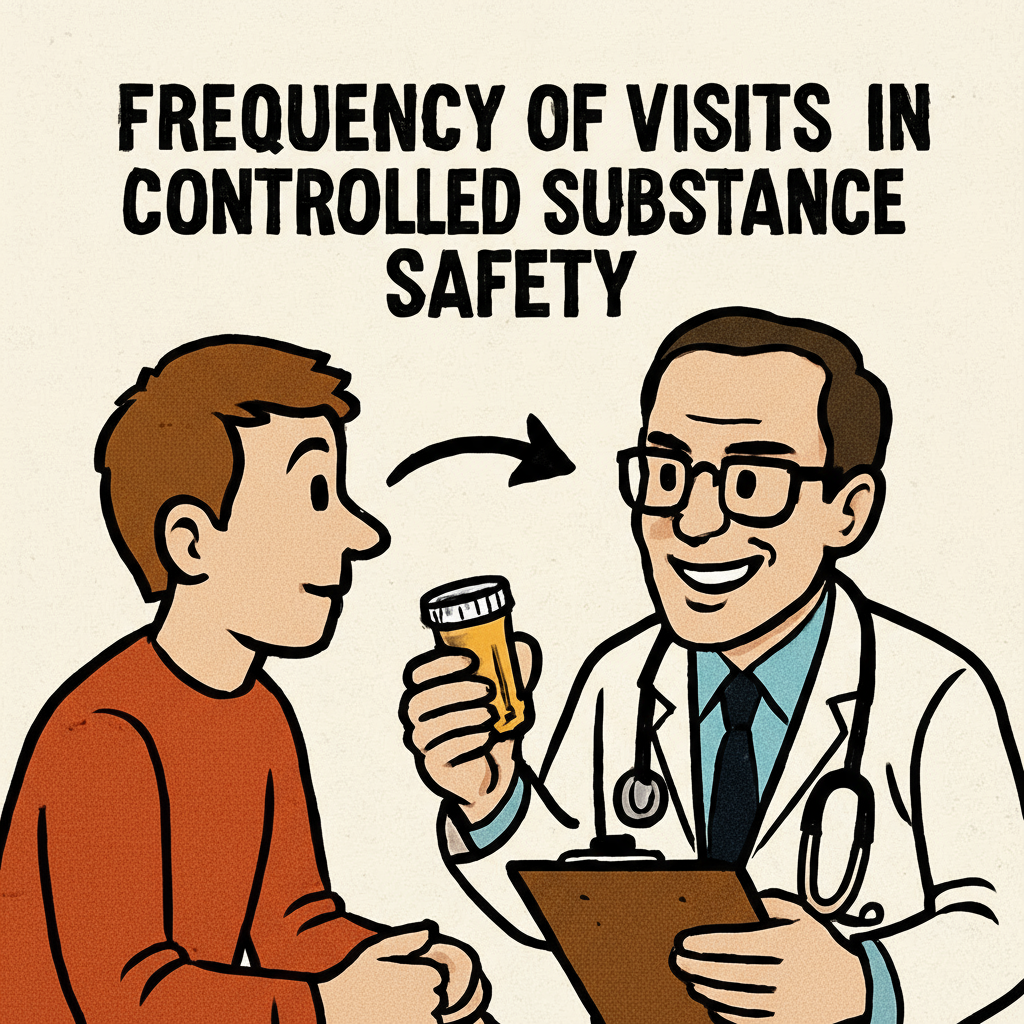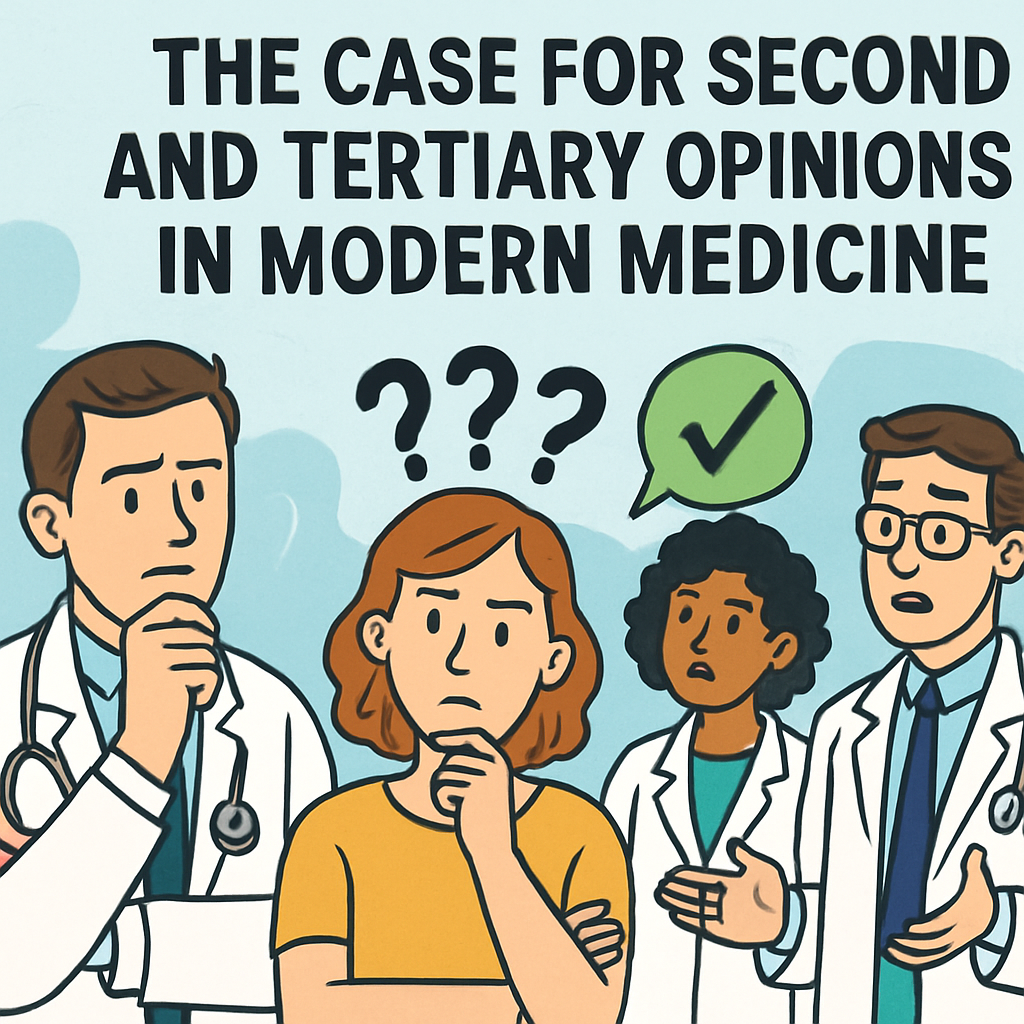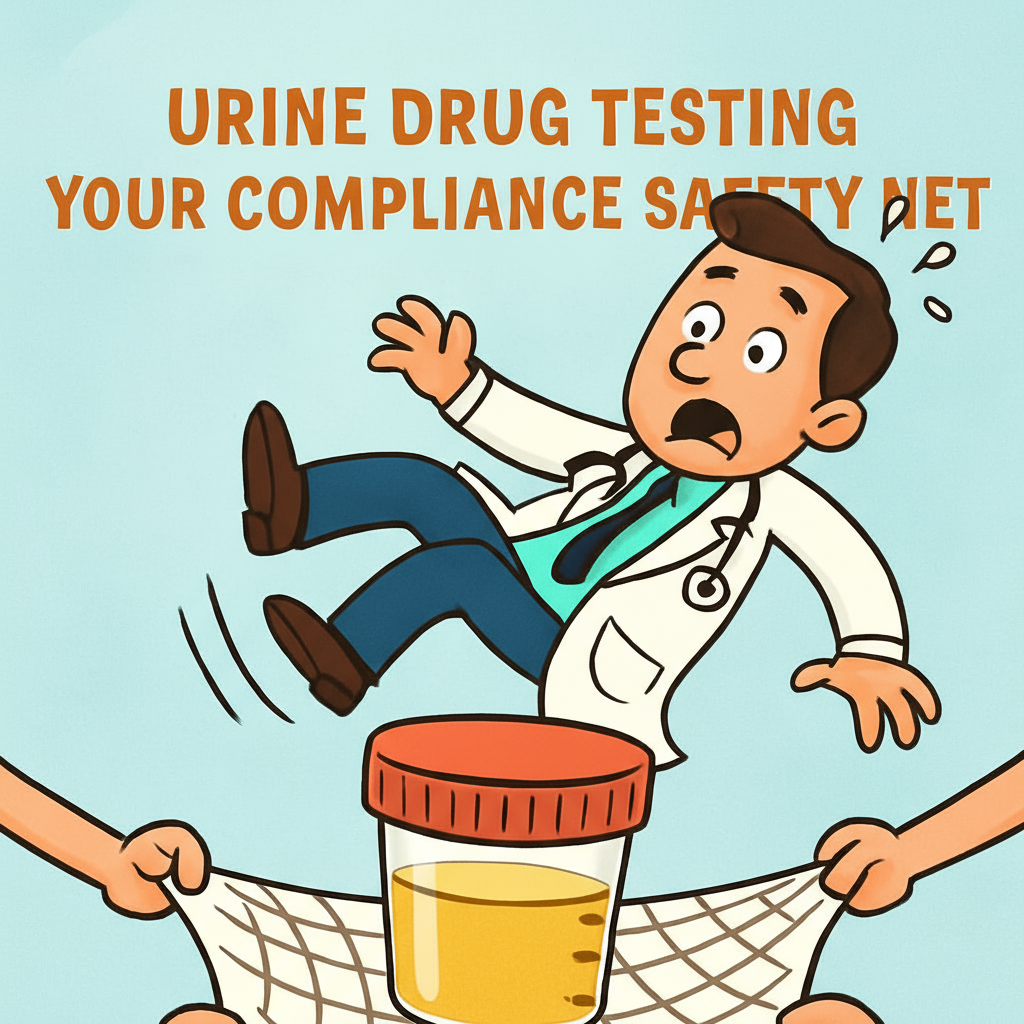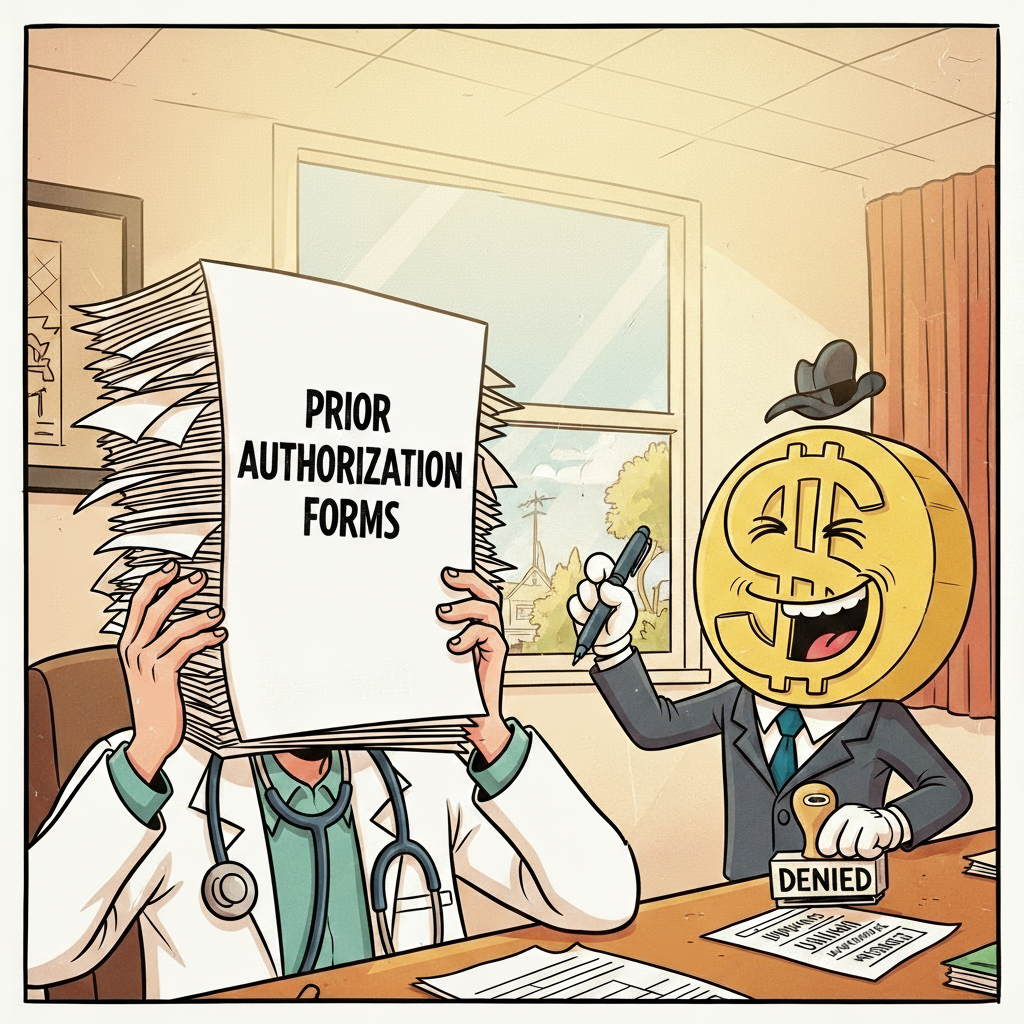
Frequency of Visits: A Key Factor in Controlled Substance Safety
Doug Jorgensen
March 21, 2025
Introduction: Safe Prescribing Is an Ongoing Process
When it comes to controlled substances, the most dangerous mistake a provider can make is thinking the job ends when the prescription is written.
The reality is that safe prescribing requires continuous oversight—and one of the most effective oversight tools is the frequency of patient visits.
The interval between follow-ups isn’t just a scheduling decision—it’s a clinical and regulatory safeguard.
Why Visit Frequency Matters
Frequent patient visits are crucial for safe and compliant controlled substance prescribing. They enhance patient safety by allowing continuous assessment of medication effectiveness, monitoring for side effects, and early identification of misuse or dependence. These visits also mitigate risk for providers by demonstrating active monitoring and proactive problem-solving. Furthermore, they ensure compliance with state, federal, and professional guidelines, preventing penalties and malpractice claims. Finally, frequent check-ins cultivate stronger patient-provider relationships, facilitating open communication and building trust. In essence, consistent visits are indispensable for responsible and effective controlled substance management.
Determining the Right Frequency
Visit frequency for controlled substance prescriptions should be dynamically adjusted based on individual patient risk.
Low Risk: Stable patients with adherence history. Visits every 3–6 months.
Moderate Risk: Complex cases, polypharmacy, minor compliance issues. Visits every 1–3 months.
High Risk: History of SUD, inconsistent monitoring, high-dose therapy. Monthly or more frequent visits.
Beyond frequency, comprehensive safety includes:
- Urine Drug Monitoring (UDM)
- Prescription Drug Monitoring Programs (PDMPs)
- Pill Counts and Medication Agreements
- Patient Education
- Interdisciplinary Collaboration
The goal is a safe and effective therapeutic environment, balancing patient needs with preventing misuse and diversion.
What to Cover at Each Visit
Frequent, thorough patient visits are vital for safe controlled substance use, encompassing:
1. Clinical Assessment: Comprehensive evaluation of patient well-being, pain, function, mental health, and medication effectiveness, including dose adjustments and side effects.
2. Compliance Checks: Mitigating risks through Prescription Monitoring Program (PMP) review, pill counts, and urine drug testing (UDT) to prevent illicit polypharmacy, diversion, and misuse.
3. Education and Counseling: Promoting safe practices by educating on secure storage, avoiding alcohol/illicit drugs, understanding medication combinations, and proper disposal.
4. Documentation: Meticulous record-keeping for legal and care purposes, covering risk assessment, monitoring steps, patient understanding, treatment plan modifications, and all discussions.
Common Mistakes to Avoid
Properly managing controlled substances is crucial for patient safety and legal compliance. Avoid these common errors:
- Extending Visit Intervals Without Reassessment: Don’t automatically lengthen visit times for stable patients. Their condition can change, increasing risks like substance use disorders or adverse drug interactions. Best Practice: Regularly reassess and update patient risk profiles, considering medical history, symptoms, social support, and mental health. Use assessment tools alongside clinical judgment.
- Lack of Documentation for Extended Intervals: Always document the clinical reasoning for extending visit intervals. Consequences: Poor documentation hinders defense in audits or adverse outcomes, appearing arbitrary. Best Practice: Document specific patient details supporting the extension, like stability, adherence, and negative drug screens. Note patient discussions about the new schedule.
- Inconsistent Standard Application: Apply controlled substance prescribing policies uniformly. Consequences: Inconsistent standards lead to legal issues, disciplinary action, and damaged reputation. Best Practice: Develop clear, written policies for controlled substance management and visit frequency based on risk. Train staff thoroughly and ensure consistent application, regardless of patient demographics. Regularly audit practices.
Regulatory and Payer Expectations
Insurance companies now require proof of recent patient visits for controlled substance claims, preventing misuse and ensuring active treatment plans. Failing to meet these expectations can lead to payment denials, regulatory investigations by the DEA and state boards, and potential disciplinary action, including fines, license suspension, or revocation. Therefore, meticulous record-keeping, consistent follow-up, and understanding regulations are crucial for practitioners to protect patients and themselves from legal and financial issues.
The Patient Perspective
Regular visits are essential for patients on controlled substance prescriptions. They ensure eligibility and commitment to safe, responsible therapy. During visits, providers assess adherence, monitor for diversion, and review treatment plans. These visits also offer critical opportunities to enhance safety and refine treatment. They allow for risk mitigation, symptom management, early detection of misuse, and patient education. Flexible scheduling and telehealth options can ease the burden, making consistent engagement feasible while adhering to regulations. This approach prioritizes patient safety and access to effective care.
Final Thoughts: The Calendar Is a Compliance Tool
Visit frequency is one of the simplest, most controllable factors in safe controlled substance prescribing.
It protects patients, demonstrates due diligence, and builds a documented record of responsible care.
In the eyes of regulators, the best evidence that you’re managing controlled substances responsibly is seeing your patients—often, consistently, and with purpose.
About the Author
Douglas J. Jorgensen, DO, CPC, FAAO, FACOFP
Dr. Doug is a physician, consultant, and national educator on healthcare compliance, risk mitigation, and controlled substance prescribing. He helps practices design monitoring protocols that protect patients and providers alike.


